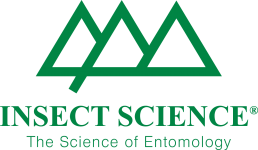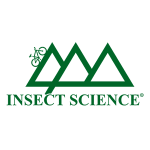Host plants
Red scale is a highly polyphagous pest, feeding on a wide range of indigenous and exotic trees and shrubs and in southern Africa alone, it has been recorded from more than 200 different plants. Locally, common cultivated hosts include citrus, several species of deciduous and subtropical fruits, and roses.
Damage
Infested fruit illustrated. Heavy infestations of red scale can lead to defoliation and twig dieback, and ultimately the death of the tree, due to toxins that the scale produce. When infestations on tree trunks and branches are severe, longitudinal cracking of the bark can also occur. Early infestation of the fruit before the fruit has reached full size, can result in permanent pock marking and subsequent down-grading of the fruit. Severe infestations can cause mature fruit to drop. Red scale is a quarantine pest for some countries in the Far East, where there is no tolerance for fruit infestation; other markets treat it as a cosmetic pest and will reject fruit infested with a large number of scales.
Red scale is a serious production pest because it can kill trees, and infestations on small fruit can cause permanent pockmarking. When it developed resistance to organophosphates (Ops), with growers worried about using poor quality mineral oils, it became one of the most important citrus pests in southern Africa. However, now that it can be controlled with inexpensive pesticides such as pyriproxyfen and imidacloprid, it is no longer considered a key pest.
Life history
Both sexes of red scale emerge as pale, yellow crawlers that are not easy to see in the orchard without magnification. However, when they settle they lose their ability to walk, and commence the formation of a soft, white scale-like cover over their bodies. During this phase the first instar nymphs are termed white caps and are easily seen with the naked eye. Healthy nymphal scales subsequently develop a hard, red to orange-coloured cover which gives the pest its name. This first scale formation is called the nipple stage and it can be formed within two days of the crawler settling but the whole first instar lasts approximately two weeks. Crawlers move outwards towards the light before settling and may move as far as 300 mm. if they are on the main branches, they cannot therefore move all the way to the fruit in one generation as mealybug crawlers can. Once on the fruit, crawlers may settle close to their parent scale.
Females have a second nymphal instar before the adult stage, both of which are immobile. The scale cover of virgin females tends to be soft and greyish in colour and, unlike that of the mature female, cannot be lifted without tearing. This second instar may also last approximately two weeks.
In the male, the first instar stage is followed by immobile pre-pupal and pupal stages which culminate in winged adults. In the last immature phases of the male scale its cover becomes elongated in contrast to the circular covers of both immature and mature female scale. Winged male scales are not usually seen in the orchard except on sticky traps. The complete lifecycle from crawler to crawler may take from 60 days in summer to over 140 days in winter. There may be four to six generations on lemon trees, depending on the climate.
Natural enemies
Parasitic wasps that attack red scale in southern Africa include aphelinds Aphytis coheni DeBach, A. melinus DeBach, A. africanus Quednau, A. chryaomephali (Mercet) and Encarsia lounsburyi (Berlese & Paoli), as well as the encyrtids, Habrolepis rouxi Compere and Comperiella bifasciata Howard. Of these species, A. melinus, and A coheni (previously considered as A. lingnanesis Compere) were introduced from California during the early 1960s and C. bifasciata from Australia in 1996.
Predators include ladybird beetles Chilocorus spp., Rhyzobius lophanthae (Blaisdell), (introduced), various lacewing species, Geocorus sp. (Lygaeidae) and a predatory mite, Cheletogenes orantus (Canestrini & Fanzago).
Management
Chilocorus nigrita (Fabricuis), which was inadvertently introduced from India and Pakistan in the 1980s, the species of Aphytis and occasionally C. bifasciata, are the principal biological control agents. In the past some insectaries provided A.phytis (and other natural enemies) for release but with the widespread use of generic imidacloprid and pyriproxyfen formulations this practice became unviable and was discontinued. In most citrus producing regions, the naturally-occurring populations of Aphtis africanus,if conserved, will contribute the most towards biological control of red scale.
Historically there have always been two approaches to the control of red scale: preventative and corrective. Corrective control was possible as a management strategy when the pest was still susceptible to organophosphates (Ops); growers could wait and see whether the scale would be controlled biologically before applying an OP late in the season that would kill scale on the fruit. Most red scale in southern Africa is now resistant to Ops and other plant protection products (e.g. mineral oils) are either not very effective against adult scales on the fruit, have poor contact efficacy or have residue restrictions that prevent their use shortly before harvest. Corrective control is therefore only used in an emergency and methomyl is still the favoured, albeit only partially effective, option. There are citrus production regions where red scale could be controlled biologically with only an occasional maintenance spray of mineral oil every two or three years. However, the necessity of commercial farmers to control citrus thrips and mealybug, reduces the impact of natural enemies on scale on the fruit until mid-summer; the climate in some regions is then also not suitable for natural enemies. The emphasis is therefore on preventative control, especially if long residual thripicides are required. Good quality horticultural mineral oils are available that are the most IPM-compatible option for controlling red scale, but they must be used at certain phenological times and when trees are not stressed, to avoid possible phytotoxic effects. Spirotetramat is the next most IPM-compatible option, although it will kill predatory mites. Other popular options involve soil treatments of imidacloprid and sprays of pyriproxyfen, but these have some detrimental non-target effects.
Sticky traps with synthetic red scale pheromone can be used to monitor flight peaks of males and together with degree-day data can indicate when crawlers are likely to be present. This can be useful in maximizing the efficacy of insecticidal sprays such as buprofezin. However, using these traps to decide whether or not to apply a plant protection product has proved unreliable.
Regular scouting and inspection of fruit is important because of the permanent damage that red scale can cause when moving onto small fruitlets and because the control of adult red scale on fruit is difficult. Microscopic examination of red scale can also be used to determine the level of parasitism and whether a corrective treatment will be required.






